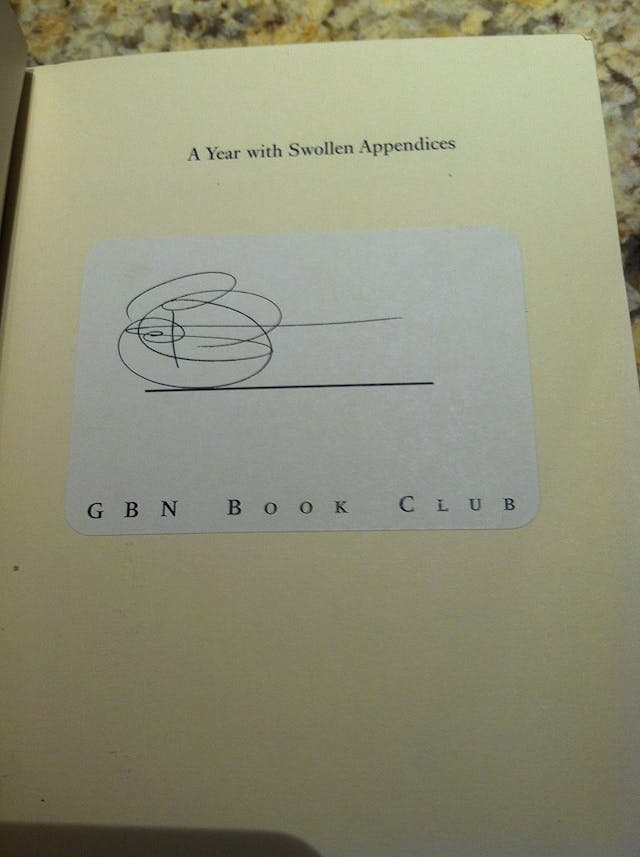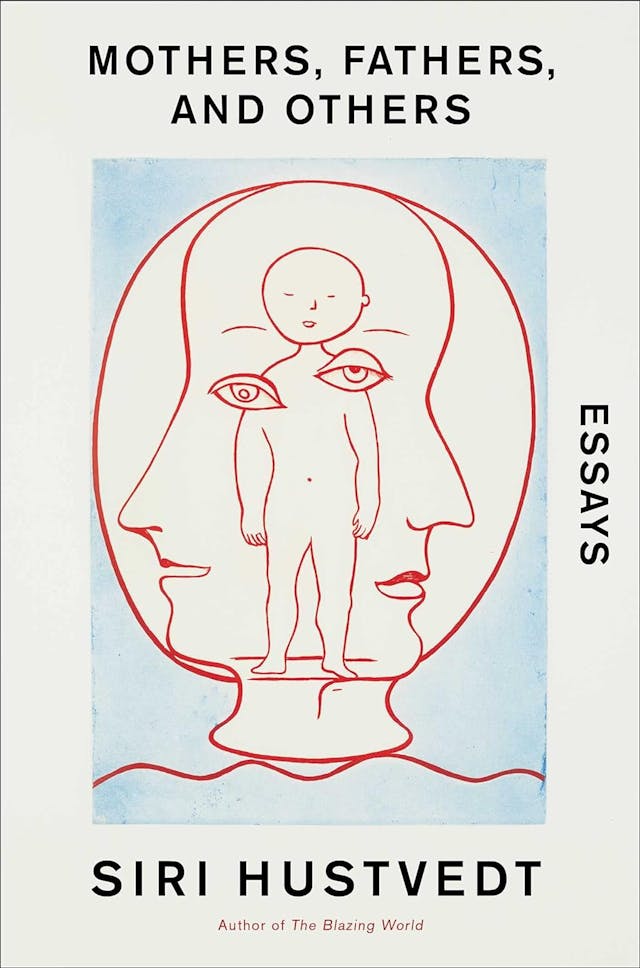Spencer Bailey | November 22, 2021
The Monday Media Diet with Spencer Bailey and Andrew Zuckerman
On high/low media, Eno, and breathing
Recommended Products

A curated selection of the best thinking and wisdom shared by leading voices about a historic pandemic year and how best to emerge from it.

Brian Eno's personal work on its twenty-fifth anniversary, capturing his experiences in 1995, including the making of David Byrne’s “Outside” and U2’s “Passenger,” among profound insights.

A collection of essays by Siri Hustvedt, exploring various themes and showcasing her prowess as one of the greatest writers, essayists, and thinkers alive.

Rebecca Solnit's latest book that beautifully explores George Orwell’s life and work through his little-known passion for gardening and the natural world.
We have another rare bird in the history of MMD: the duo interview! We reserve this for special people. Today we have editor and journalist Spencer Bailey (SB) and photographer and creative director Andrew Zuckerman (AZ), who are founders of The Slowdown media company. Their first book just came out on November 15: AT A DISTANCE: 100 Visionaries at Home in a Pandemic (go buy it!) which offers a “curated selection of the best thinking and wisdom shared by leading voices about a historic pandemic year and how best to emerge from it.” Have a great week. -Colin (CJN)
Tell us about yourself.
We’re the co-founders of The Slowdown, a media company that focuses on culture, nature, and the future. We currently make a website, slowdown.tv; two podcasts, Time Sensitive and At a Distance; and a weekly newsletter that’s organized around the five senses. This month we’re publishing our first book, At a Distance: 100 Visionaries at Home in a Pandemic.
Describe your media diet.
SB: On weekdays, I get a bulk of my news through newsletters: The Morning and Evening Briefing from The New York Times, Morning Brew, and the Financial Times’ FirstFT. I also put on the BBC Global News Podcast when I’m getting ready for the day. A few times a week, I’ll look at Twitter, where I follow around three hundred journalists, writers, and others whose perspectives I value—Thomas Chatterton Williams, Elisa Gabbert, Paul Holdengräber, Michael Kimmelman, and Suketu Mehta among them. On the newsletter tip, I try to find time for The Information, Azeem Azar’s Exponential View, Bill McKibben’s The Climate Crisis, Dense Discovery, and Kyle Westaway’s Weekend Briefing; for media on media, lately I’ve been turning to Brian Morrissey’s The Rebooting. I have subscriptions to The New Yorker, New York magazine, and The Atlantic, but candidly, struggle to keep up with them. At a 10th Avenue newsstand near The Slowdown’s office, I like to look at the punny New York Post and New York Daily News coverlines each day. On the weekends, I get The New York Times in print, and occasionally I’ll pick up the Financial Times. Reading is a Sunday morning ritual for me. I still enjoy the act of holding and reading a physical newspaper or magazine. I find that I just retain things better from a printed page rather than from a screen. When I’m walking, driving, or cooking, I like to listen to interview podcasts. Longform, which features conversations with non-fiction writers, is one of my favorites—I absolutely loved this recent episode with Mitchell S. Jackson, with whom I was once in a fiction-writing seminar taught by Gordon Lish. I also frequently listen to Why Is This Happening? with Chris Hayes, Fresh Air with Terry Gross, Kara Swisher’s Sway, and The Experiment. For political insight and fodder, as well as some laughs, Real Time with Bill Maher is my go-to. And okay, I’ll admit it, I’ve watched practically every Law & Order: SVU episode.
AZ: I love high and low, so The New York Times has to be balanced out with the Daily Mail and The New York Post first thing in the morning before checking the ’gram, which at this point is basically just a quick way to check the memetics of the moment. Throughout the day, I’ll visit several websites that I’ve been reading since they started: Swissmiss, kottke.org, Artnet, Aeon, and Spoon & Tamago. I read newsletters when I have the day behind me and can think about the bigger picture: The Information, Heather Cox Richardson’s Letters from an American, and Brain Pickings (now The Marginalian) are fantastic ways to connect history to the current moment. In print, I read Apartamento and The Paris Review. Lastly, let’s not forget the television, which I’m not embarrassed to admit is probably where I’m most loyal. I love toggling between CNN, Fox News, OAN, BBC, and MSNBC—a true spectator sport if you enjoy narrative warfare. Since Mr. Trump moved to Florida, I do that far less, and now like to watch Treehouse Masters (my brand of aspirational content), Succession (IMHO, the most well-written comedic drama in television history), Curb Your Enthusiasm (a consistent mirror and cautionary tale), and of course Bill Maher and The Circus (for what is actually going on). I also listen to the podcasts we make—I have a terrible short-term memory, and somehow, despite having been there, I feel like I’m hearing it for the first time.
What’s the last great book you read?
AZ: A Year with Swollen Appendices by Brian Eno, who just republished this very personal work on its twenty-fifth anniversary. It was written in 1995, when he made David Byrne’s “Outside” and U2’s “Passenger,” and traveled extensively, all while managing family life. This book is filled with profound insights about the banality of making things in a deeply curious and rigorous way.
SB: Mothers, Fathers, and Others: Essays by Siri Hustvedt, whom I recently interviewed for an upcoming episode of Time Sensitive. I think Siri is one of the greatest writers, essayists, and thinkers alive. Currently, I’m also in the middle of Rebecca Solnit’s latest book, Orwell’s Roses, which beautifully explores Orwell’s life and work through his little-known passion for gardening and the natural world.
What’s your reading strategy when you pick up a print copy of your favorite publication?
AZ: Cover to cover. I can't stand it when people jump around or go back to front—unless it’s the rare case where the piece is conceived as a non-linear path. I try to respect the order intended by the maker.
SB: I’m with Andrew. Also, I have to say it: The idea of any “reading strategy” or quick-fix approach to reading seems dubious and antithetical to the very act. Reading should be an opportunity to get lost and roam, and to remain open and be surprised.
Who should everyone be reading that they’re not?
SB: Siri Hustvedt.
AZ: Edmund de Waal.
What is the best non-famous app you love on your phone?
AZ: I’m constantly using the app Picture This to identify the plants and weeds that catch my attention.
S: Eddie Stern’s The Breathing App. It’s simple, minimalist in design, and practically the opposite of what we think of when we think of the word “app.” Admittedly, I don’t use it as often as I should.
What is one place everyone should visit?
AZ: The Metropolitan Museum of Art.
SB: Can I pick a few? The Katsura Imperial Villa in Kyoto. The Noguchi Museum in Long Island City. The National Memorial for Peace and Justice in Montgomery, Alabama. The Smithsonian National Museum of African American History and Culture. The Clyfford Still Museum in Denver.
Plane or train?
SB: Coltrane.
AZ: Really depends on the country and how much of it you’d like to see at eye level.
Tell us the story of a rabbit hole you fell deep into.
SB: In May 2013, I first set foot in the Noguchi Museum and was completely transfixed. There was no turning back. I’ve been reading whatever I can about the life and work of Isamu Noguchi ever since, and have both joined the museum’s board and amassed a collection of fifty-some Noguchi books in the process. A big-picture, long-view thinker, he was a truly global artist, with studios in both New York City and Japan, and way ahead of his time. Blurring boundaries between art and design, craft and technology, nature and industry, Noguchi had a perspective, worldview, and interests that, now that I think of it, have without a doubt informed what we’re building today at The Slowdown.
AZ: I’ve been in a deep dive on seventeenth- and eighteenth-century Japanese ikebana scrolls for a while now. Arranging flowers has always been a super-effective way to harmonize humanity and the natural world, and nobody has ever done this better than the Japanese Edo period practitioners. The scrolls are exceedingly rare, originally intended to be a guide and record for future generations, but occasionally one comes up for auction and the tiny community of people who fight with their wallets to attain it. We always have a couple of scrolls on view at the studio. I look at them every day. They’re visual poems, packed with metaphor, instructions for a life-giving collaboration between “the human” and “the earth.” (SB and AZ)
__
WITI x McKinsey:
An ongoing partnership where we highlight interesting McKinsey research, writing, and data.
Combating the Great Resignation. To keep top talent in the fold, managers must actively change their leadership styles—focusing less on controls and more on culture and connections. A recent episode of The McKinsey Podcast explains how to respond and adapt.
--
WITI reader offer: Atlas Bars
Our friend and longtime WITI subscriber Jylle at the protein bar company Atlas reached out with an offer for our crew. It’s a unique product: Organic ashwagandha to reduce stress. Grass-fed whey to fuel performance. Zero added sugar. Clean, real-food ingredients. We’ve tried them and dug them. If you want to try, there’s a code for WITI readers to get you 20 percent off. Try the sample pack.
--
Thanks for reading,
Noah (NRB) & Colin (CJN) & The Slowdown


